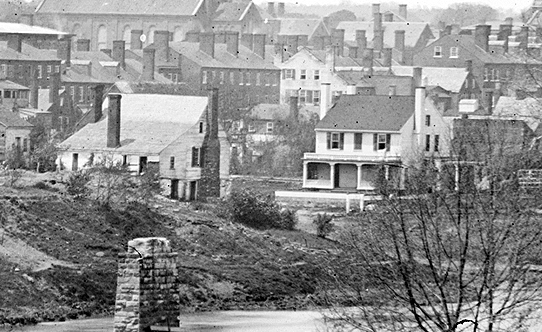
A look at the historic Eliza Eubank house on Sophia Street yesterday and today.
(Image courtesy of the National Park Service)
Updated: Tuesday, 4 October 2011 8:11 AM EDT
Permalink | Share This Post
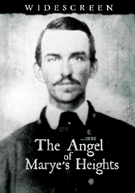
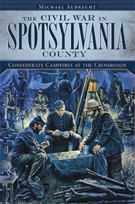
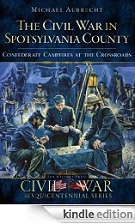

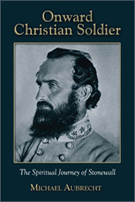

A look at the historic Eliza Eubank house on Sophia Street yesterday and today.
(Image courtesy of the National Park Service)

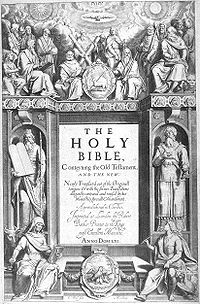 Tomorrow I will be participating as a reader at the King James Bible Anniversary Celebration at Spotsylvania Presbyterian Church. I will be reading Chapters 15, 17, 19, 21, 23, 25 and 27 from the Book of Acts. This year is the 400th Anniversary of the publication of the King James Version of the Bible (KJV). Several churches in our community, including SPC, are working together to provide a series of events to honor this occasion. The program opened with a lecture on September 26 at Fredericksburg Baptist Church which featured noted experts on the KJV. This was followed by an ongoing multi-church effort to publicly read the entire King James Bible from September 16 through October 2. My church is hosting a reading of the New Testament books of Acts through 2 Corinthians on Saturday, October 1 beginning at 3pm. As a historian I tend to favor the KJV, despite its antiquated use of language. Join us if you’re interested in hearing the Word in this traditional format.
Tomorrow I will be participating as a reader at the King James Bible Anniversary Celebration at Spotsylvania Presbyterian Church. I will be reading Chapters 15, 17, 19, 21, 23, 25 and 27 from the Book of Acts. This year is the 400th Anniversary of the publication of the King James Version of the Bible (KJV). Several churches in our community, including SPC, are working together to provide a series of events to honor this occasion. The program opened with a lecture on September 26 at Fredericksburg Baptist Church which featured noted experts on the KJV. This was followed by an ongoing multi-church effort to publicly read the entire King James Bible from September 16 through October 2. My church is hosting a reading of the New Testament books of Acts through 2 Corinthians on Saturday, October 1 beginning at 3pm. As a historian I tend to favor the KJV, despite its antiquated use of language. Join us if you’re interested in hearing the Word in this traditional format.

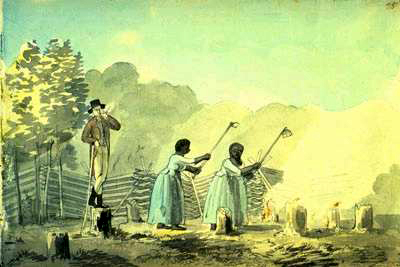
One of the more overlooked spots on the Fredericksburg National Battlefield is the Bernard Slave Cabins. This area was the homestead of a number of enslaved African-Americans and a focal point of the fighting that took place near Prospect Hill and the Slaughter Pen Farm. Today the site is accessible via the Bernard Cabins Trail. According to the NMPS website:
Halfway down Lee Drive, a little more than a half mile beyond its intersection with Lansdowne Road, begins one of the newest and least-known trails on the Fredericksburg Battlefield. The trail starts at the road and winds through the woods for half a mile before emerging into a large plowed field overlooking Shannon Airport and the Richmond, Fredericksburg, and Potomac Railroad (now CSX). It terminates at Bernard's Cabins, the site of a small slave community. Bernard's Cabins became an important Confederate artillery position on "Stonewall" Jackson's end of the line. The center of his line was wooded, preventing the Confederate leader from placing any artillery there. Instead, he placed a large number of cannons on either side of the woods and angled the guns toward one another so as to catch any Union troops who might attempt to attack the woods in a deadly crossfire. To the left of the woods, at Bernard's Cabins, stood nine guns of Capt. Greenlee Davidson's battalion. The cabins and their occupants belonged to Arthur Bernard, the owner of Mannsfield, a plantation house that stood about one and a half miles to the east.
The NPS tabletop marker that was erected on the site states: “On this knoll stood Bernard's Cabins, a small community that in 1860 was home to about three dozen slaves. The complex consisted of three two-room cabins, a stone-lined well, and perhaps two additional buildings. This was only one of several such clusters of slave housing scattered across the 1,800-acre ‘Mannsfield’ estate. The men and women who lived here helped power the most prosperous plantation in the Fredericksburg area. Arthur Bernard's plantation house, ‘Mannsfield’ (1766), stood about a mile east of here (it burned in 1863). During the 1862 Battle of Fredericksburg it served as headquarters for three top Union generals - W.B. Franklin, J.F. Reynolds, and W.F. Smith.”
The Historical Marker Database provides detailed GPS data on this spot, as well as photographs depicting the current site and markers. The Bernard Slave Cabin marker includes a 1798 Benjamin Latrobe illustration (above) depicting two slave women preparing tobacco under the watchful eye of an overseer, as well as a 1770 advertisement seeking the return of a runaway slave from the Mannsfield plantation.
NMPS historian Frank O 'Reilly describes the significance of the Bernard Slave Cabins grounds in his book “The Fredericksburg Campaign: Winter War on the Rappahannock.” These small cottage-like buildings presented a potential problem for Confederate Gen. Thomas “Stonewall” Jackson’s artillerists who were forward deployed and attempting to prepare a cross-fire in anticipation of the Federal’s advancement towards Prospect Hill. He writes:
Crutchfield offset the problem somewhat by Captain Greenlee Davidson’s small battalion of guns at the Bernard Slave Cabins to cover Brockenbrough’s left rear. Crutchfield believed that an attack against Brockenbrough’s battalion would expose its flank to a raking oblique fire from Davidson’s guns. Davidson used elements of three batteries with a combination of six 3-inch rifles, two Napoleons, and one light 6-pounder. The artillerist posted Captain William H. Caskie’s Hampden (Virginia) Artillery with another section of Ed Marye’s Fredericksburg Artillery and Lieutenant Charles W. Statham’s Lee (Virginia) Artillery. The batteries unlimbered behind a rise capped by Bernard’s Cabins, three hundred yards behind Brockenbrough, and a thousand yards to R. Lindsay Walker’s left. Some of Marye’s Fredericksburg Artillery fought within sight of their homes. The gunners tore down the Bernard Cabins to clear their field of fire.
This tactic would prove disastrous for those positioned at Bernard’s Cabins and tasked with covering the RF&P railroad. In an article written for The Free Lance-Star’s Town and County titled “Slave cabins were center of 1862 battle maneuverings” fellow NMPS historian Donald Pfanz recalled the futility of the positioning and the resulting devastation that ensued. He wrote:
On the morning of Dec. 13, 1862, Union skirmishers crept forward through the mist-shrouded fields and began shooting at Brockenbrough’s exposed gunners. When Lane’s men were unable to drive them away, Brockenbrough opened on the pesky Union riflemen with canister large cylinders filled with dozens of marble-sized iron balls that had the effect of a giant shotgun blast. Brockenbrough’s guns drew the fire of Union artillery batteries on the plain ahead, and soon the Confederate guns were under intense fire from enemy sharpshooters and cannon alike.
The slave cabins and a small pine grove had stood between Davidson and his Yankee assailants, but no more. By the time he stopped shooting, the cabins were in ruins and the grove had been reduced to kindling. At Bernard’s Cabins, Union shot ignited one of Davidson’s ammunition chests, causing a terrific explosion. Fifteen of 20 shells caught fire and exploded, blackening the ground and stampeding the battery horses. One shell cut a Confederate gunner in two and threw his blackened clothing into a nearby tree; another took off the leg of an officer just above the knee. At one gun alone, five artillerists were injured. Jackson witnessed the vigor of the Union response and wisely cancelled the attack. South of town, at least, the killing was over.
Today, the Bernard Cabins Trail provides one of the most peaceful and enjoyable nature walks on the whole Fredericksburg Battlefield proper. Unfortunately, the cabins themselves are no longer standing and one has to depend entirely on their imagination to envision what this small slave community looked like. Perhaps in the future, either through traditional building reconstruction or virtual 3D-modeling technology, the Bernard Slave Cabins will be resurrected again. Until then, I highly recommend that visitor’s take a moment during their tour to leave the “main drag” of Lee Drive and hike the half a mile down to this unique and important site.


This week’s biggest news story was the controversial execution of Georgia Death Row inmate Troy Davis and the reignited debate over the death-penalty in America. This got me thinking about how public executions have been carried out in our country and their obvious emotional impact on those who witness it.
You may recall a few weeks ago when I mentioned formalizing my lecture for the Richmond Civil War Round Table. That talk will take place in May of next year. The RCWRT folks were very interested in my book on The Civil War in Spotsylvania: Confederate Campfires at the Crossroads, and requested that I speak on that title. Apparently someone at the RT revealed how impressed they were with my extensive use of first-hand recollections. This collection of letters makes up the majority of the book which has become both a reference source and a pleasure read. There is very little glamour or romance in this work, and I think that I met my goal of presenting the miserable and mundane life that Johnny Reb experienced while on campaign. It’s a very “gray” book (no pun intended).
One topic that they specifically mentioned anticipating is the section on camp justice. In the chapter titled “Crime and Punishment: Executions, Courts-Martial and Humiliations,” I present multiple accounts and images of soldiers being punished and killed for crimes against their fellow soldiers. Here is an excerpt:
As the war dragged on into its third and fourth years, soldiers on both sides of the conflict began to flee the army in record numbers. Some were traumatized by the horrors they had witnessed, others were shamed by the atrocities they had committed and many more were disenchanted with the inexperienced officers who ultimately hampered their chances at survival. Southern troops were more likely to desert, as their supplies were dwindling at a more rapid rate compared to their Northern counterparts who were better outfitted. According to Dr. James I. Robertson Jr. in Tenting Tonight, one in every seven Confederates would eventually desert. As the soldiers fell into a deeper sense of desperation, the futility of their fight and cause became overwhelming at times. One Rebel soldier wrote, “Many of our people at home have become so demoralized that they write to their husbands, sons, and brothers that desertion is now not dishonorable.”
In order to curb a mass exodus from spreading throughout the ranks of the Confederate army, officers were forced to make grim examples of those who were apprehended while attempting to abandon their duty. The odds of successfully escaping were said by some to be three to one in favor of the soldier. Those who were caught, however, were dealt with in a swift and deadly manner. Following a court-martial, deserters would often be sentenced to death by firing squad. These public executions were to be carried out in front of the entire camp in an effort to strike fear in the hearts of future would-be fugitives.
Each prisoner would be given an opportunity for prayer with a camp chaplain or priest and then blindfolded and (hopefully) shot dead in the chest by a group of riflemen who usually had one loaded musket and the rest primed with powder in place of projectiles. This was done to help dispel guilt. Many times the prisoner’s body would be positioned so as to fall right into a coffin. Sometimes, the lack of marksmanship among the firing squad required additional volleys to finish the job. This made the horrific affair all the more difficult to watch, as the additional suffering of a fellow countryman was unbearable.
Less drastic punishments involved the public humiliation of wearing berating signage, being forced to do hard labor, the branding of the letter “D” for deserter or “C” for coward on the soldier’s hand or cheek or simply being drummed out of camp in a reprehensible fashion. In an age when nobility was held in the highest regard, the dishonor one would bring upon himself and his family by running away was usually deterrent enough. However, as the trauma of war destroyed one’s optimism, the risk of death and disgrace became less frightening. Some Confederate officials were concerned about the negative effect of camp executions on what remained of troop morale. Several states instituted a no-punishment clause for soldiers who willfully returned to their ranks. One governor wrote a public affirmation that stated,
“Many of you have, doubtless, remained at home after the expiration date of your furloughs, without the intention to desert the cause of your country, and you have failed to return to your Commands for fear of the penalty to which you may be subjected. Many of you have left your Commands without leave, under the mistaken notion that the highest duty required you to provide sustenance and protection to your families. Some have been prompted to leave by one motive and some by others. Very few, I am persuaded, have left with the intent to abandon the cause of the South.” He added, “I am authorized to say that ALL WHO WILL without delay VOLUNTARILY return to their Commands, will receive a lenient and merciful consideration; and that none, who so return within forty days from this date, will have the penalty of death inflicted on them.”
In a letter from Spencer Glasgow Welch, a surgeon in the 13th South Carolina Volunteer Infantry (McGowan’s Brigade), to his wife, the physician details the events of an execution by firing squad:
Camp near Rappahannock River Va
March 5, 1863
Edwin Jim Allen and Ben Strother took dinner with me yesterday and I think I gave them a pretty good dinner for camp. We had biscuit, excellent ham, fried potatoes, rice, light bread butter, stewed fruit and sugar. They ate heartily as soldiers always do. Edwin is not suffering from his wound, but on account of it he is privileged to have his baggage hauled. A man was shot near our regiment last Sunday for desertion. It was a very solemn scene. The condemned man was seated on his coffin with his hands tied across his breast. A file of twelve soldiers was brought up to within six feet of him, and at the command, a volley was fired right into his breast. He was hit by but one ball because eleven of the guns were loaded with powder only. This was done so that no man can be certain that he killed him. If he was the thought of it might always be painful to him. I have seen men marched through the camps under guard with boards on their backs, which were labeled “I am a coward,” or “I am a thief,” or “I am a shirker from battle” and I saw one man tied hand and foot astride the neck of a cannon and exposed to view for sixteen hours. These severe punishments seem necessary to preserve discipline.
Spencer Glasgow Welch
What this (and the other letters not quoted here) tells me is that even in time of war when mass brutality and murder are a daily occurrence, the execution of one’s fellow man had a definite impact on those who witnessed it. This trauma is not unlike what is being experienced today as Americans are rethinking whether or not the administration of the death sentence is still tolerable.
